Contents of this article
- 1. Efficacy and functions of Wisteria multiflora
- 2. Pictures of Japan’s top ten famous trees
- 3. Wisteria varieties
- 4. How to identify wisteria varieties through pictures of leaves
The efficacy and function of Wisteria multiflorum
Feature introduction:
Wisteria multiflora, also called Japanese wisteria, is a plant of the genus Wisteria in the family Papilionaceae. Large deciduous vine. Corolla purple to blue-purple. Pods oblanceolate. The flowering period is from late April to mid-May, and the fruiting period is from May to July. It is native to Japan and has also been introduced in the Yangtze River Basin and south of China.
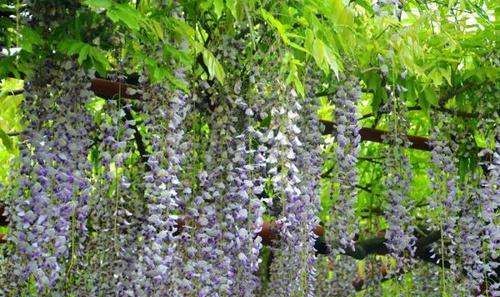
Planting and maintenance:
Wisteria multiflora is easy to propagate and can be propagated by sowing, cutting, layering, division, grafting and other methods. Sowing and cutting are mainly used, but because it takes a long time to cultivate seedlings, cutting is the most commonly used method.
Multiflora Wisteria has a long main root, so the planting site needs deep soil; Japanese Wisteria is resistant to barrenness, but fertile soil is more conducive to growth; it is also highly adaptable to soil pH; Japanese Wisteria should be planted in locations that are sunny and deep in addition to those mentioned above In addition, you also need to be able to shelter from the wind.
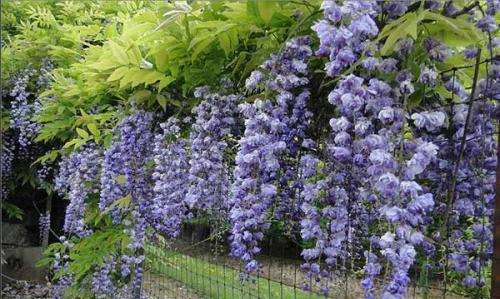
Garden applications:
Wisteria multiflorum can thrive in places with turbid air and play a role in purifying the environment. It is an excellent garden plant for air purification. Wisteria has a long lifespan, blooms densely, and is very plastic. It can be shaped into arches, fences, Artificial shapes such as flower stands and pavilion roofs; can also be planted on grass to embellish lawns; or used as tree stumps for potted landscapes.
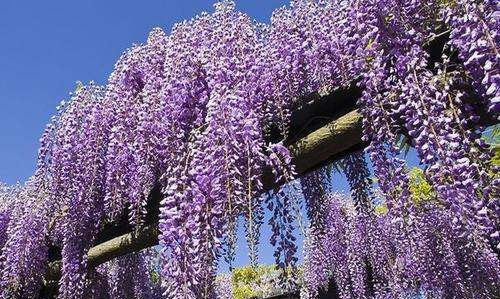
Pictures of Japan's top ten famous trees
Japan's top ten famous trees: Toyoka Wisteria, Benxia, Silver Wisteria, Ruby Wisteria, Japanese Wisteria, Japanese Wisteria, White Wisteria, Three-foot Wisteria, Multi-flowered Wisteria, and Double Wisteria.
Fenghua Wisteria, Fenghua Wisteria is famous for its abundant and fragrant flowers. The flowering period is relatively long, probably in May, and the second flowering period is from June to July. The flowers turn yellow in autumn.
Benxia is also a member of the wisteria army. When it blooms, the color of the flowers is probably yellow and white. Compared with other wisterias, it is easy to distinguish.
Silver wisteria, also known as white-flowered wisteria, is pure white when in full bloom and is very precious. Because it is a mutated wisteria, its performance is different from that of most wisterias and it is not easy to withstand cold.
The red jade wisteria has peach-colored flowers when it blooms, and the red wisteria also has a long flowering period. The flowers are very large when they bloom. It is a treasure of potted plants.
Japanese wisteria is a variation of the wisteria that was introduced in Japan. The flowers of Japanese wisteria have a light fragrance. The blooms of wisteria are not strong, but very elegant.
American wisteria is a type of wisteria cultivated in the United States. When it blooms, it looks like Chinese lilac. The fragrance is lingering but not very strong. There is also a blue moon wisteria, which is also a variant of American wisteria.
The flowers of White Jade Vine are the same white as Silver Vine, but the inflorescences are shorter, smaller and more common. It is a small wisteria that is very suitable for potting.
Sanchi Vine, although Sanchi Vine is called Sanchi, the inflorescences do not actually reach three feet, but only about 60 to 70 centimeters. The flowers of the three-foot vine are smaller, more colorful and medium-sized, so it is very suitable for potted plants or garden planting.
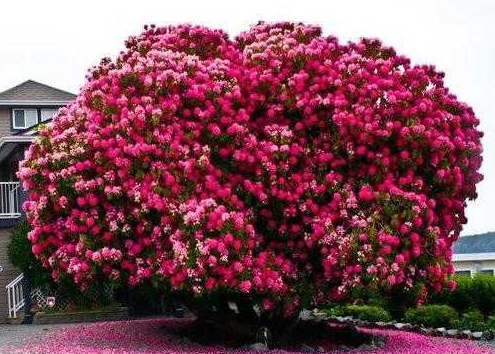
Basic information on Wisteria multiflorum and Wisteria double
Wisteria multiflora, the color of Wisteria multiflora is different from the common purple, but a rare tender pink, and the fragrance of the flowers is more like the fragrance of pea flowers. On the inflorescence, the length is also twice that of common wisteria, which is very stunning when planted in a large area.
Double wisteria, the petals of double wisteria are purple, and the inflorescences are relatively short, but thick and rich. Each flower looks like a bunch of grapes because of its multiple petals, which is highly ornamental.
Wisteria varieties
Wisteria multiflora (detailed introduction) is a wisteria tree plant of the Papilionaceae family. It is native to Japan and is now introduced in the Yangtze River Basin and the south of my country. The flowering period is from late April to mid-May. Wisteria multiflorum is very beautiful when in bloom. Its stem bark, flowers and seeds are used as medicine, and aromatic oil can also be extracted. It has very high ornamental and medicinal value.
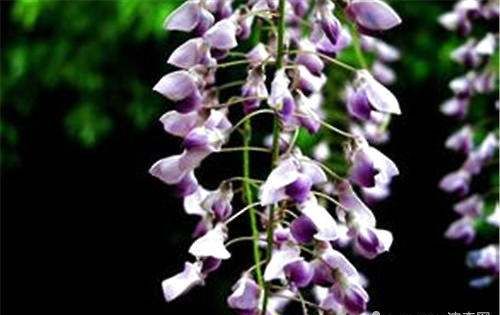
multiflora wisteria
Wisteria multiflora is a deciduous vine; the bark is russet. The stem is right-handed, the branches are thin and soft, the branches are dense, and the leaves are luxuriant. They are densely covered with brown pubescence at first and become bald later. The pinnate compound leaves are 20-30 cm long; the stipules are linear and fall early; the leaflets are 5-9 pairs, thinly papery, ovate-lanceolate, large or gradually narrow and short from bottom to top, 4-8 cm long. 1-2.5 cm wide, apex acuminate, base blunt or skewed, both sides covered with flat hairs when young, later gradually bald; petiole 3-4 mm long, turns black when dry, pubescent; stipules spiny-hairy , about 3 mm long, easy to fall off.
Chinese name: Wisteria multiflorum
Latin name: Wisteria floribunda
Alternate name:Japanese wisteria
Kingdom: Plant kingdom
phylum: Angiosperm
Class : Class Dicotyledons
Subclass: Primitive Perianth subclass
order: Rosales
Suborder: Rosa suborder
Family: Papilionaceae
family: gray edamame family
Genus:Wisteria
How to identify wisteria species by leaves pictures
1. Cypress wisteria
Evergreen upright or climbing shrub, 2-3 meters high, thornless; young branches are slender and elongated, densely covered with rust-colored scales, old branches have fallen scales, dark black, with thin vertical stripes, and the last tree The skin peels off. The leaves are papery or thinly leathery, elliptical to oblong or ovate-elliptic to lanceolate
2. W.villosa Rehd. This species is very similar to wisteria. Only the backs of the old leaves and small petioles are densely covered with white pubescence, and the flowers are lighter in color. Therefore, in landscaping, the two are mostly regarded as one and are not subdivided.
3. W. venusta Rehd. et Wils. The leaflets of W. venusta Rehd. et Wils. are covered with filamentous hairs on both sides. The racemes are short, 10 to 15 cm long, and the flowers are white. It is native to Japan.
4. Wisteria multiflora (W.floribunda DC.) Also known as Japanese wisteria, it has compound leaves with many small leaves, the old leaves are almost hairless, often 13 to 19 pieces, and the racemes are very long, up to 50 cm. The flowers are light blue (light blue). blue purple). The pods are covered with yellowish-brown felt. They are native to Japan and are commonly cultivated in the south of the Yangtze River Basin.
Cultivation varieties include: one-year-old wisteria, Xixiang wisteria, red wisteria, white wisteria, three-foot wisteria, double wisteria, fenghua wisteria, etc. Sorry can't break it down.
The above is all about the efficacy and functions of Japanese Wisteria King and Multiflora Wisteria, as well as the related content of King Wisteria. I hope it can help you.
